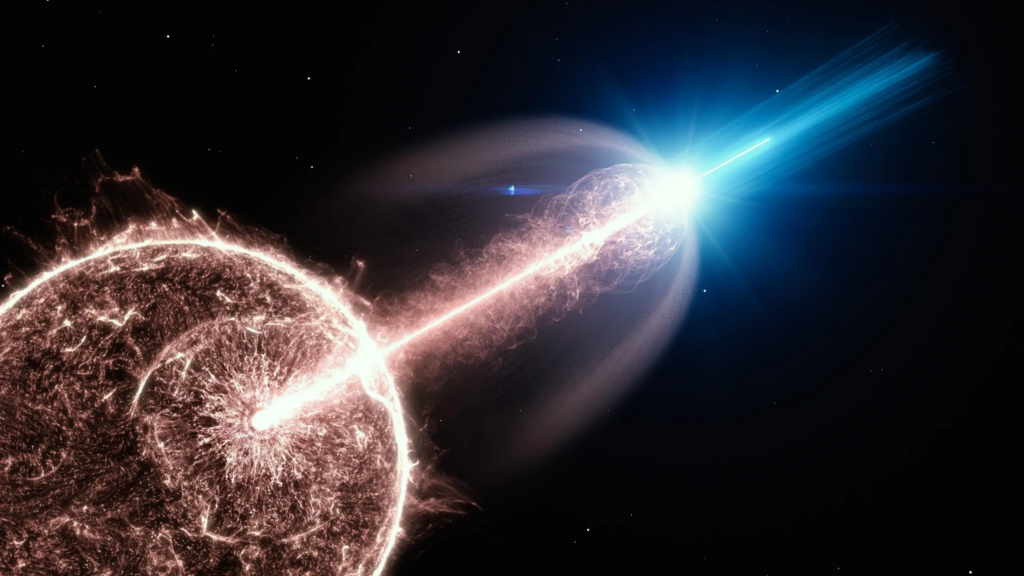Astronomers found that the strongest gamma-ray burst (GRB) ever had a unique jet shape and was pulling an exceptionally high amount of star debris.
This may explain the extreme properties of the burst, which was launched when a massive star 2.4 billion light-years from Earth in the constellation Sagitta collapsed to form a black hole, and why its afterglow lasted so long.
On October 9, 2023, the brightest GRB ever, GRB 221009A, was seen. A powerful burst of high-energy gamma-rays was followed by a low-fading afterglow spanning multiple wavelengths.
“GRB 221009A represents a massive step forward in our understanding of gamma-ray bursts and demonstrates that the most extreme explosions do not obey the standard physics assumed for garden variety bursts,” said George Washington University researcher and study lead author Brendan O’Connor.
Scientists may now understand the universe’s most powerful explosion.
Northwestern University PhD candidate Jillian Rastinejad told Live Science that GRB 221009A is brighter than other extremely energetic GRBs by at least 10.
“Photons have been detected from this GRB that has more energy than the Large Hadron Collider (LHC) produces,” she added.
Before the BOAT was found, GRBs were believed the most powerful, furious, and energetic explosions in the cosmos, capable of exploding off as much energy in seconds as the sun would emit in its ten billion-year lifespan. Long- and short-duration explosions create black holes using distinct launch methods.
The intense GRB has distinctive structure and brightness. Surprisingly wide GRB. So vast that astronomers couldn’t detect its edges.
“Our work clearly shows that the GRB had a unique structure, with observations gradually revealing a narrow jet embedded within a wider gas outflow where an isolated jet would normally be expected,” said co-author and University of Bath physics professor Hendrik Van Eerten.

Thus, GRB 221009A’s jet has wide and thin “wings” that distinguish it from other GRBs. This may explain why astronomers observed the BOAT’s afterglow in several wavelengths months after its discovery.
Van Eerten and the crew think they know what makes the BOAT jet special.
“GRB jets need to go through the collapsing star in which they are formed,” he stated. “What we think made the difference, in this case, was the amount of mixing that happened between the stellar material and the jet, such that shock-heated gas kept appearing in our line of sight all the way up to the point that any characteristic jet signature would have been lost in the overall emission from the afterglow.”
Van Eerten adds that the results may help explain BOAT and other extremely bright GRBs.
“GRB 221009A might be the equivalent of the Rosetta stone of long GRBs, forcing us to revise our standard theories of how relativistic outflows are formed in collapsing massive stars,” O’Connor said.
As scientists try to understand GRBs, the finding may help them. The discoveries may help physicists simulate GRB jet structure.
“For a long time, we have thought about jets as being shaped like ice cream cones,” said research co-author and George Washington University assistant professor of physics Alexander van der Horst. “However, some gamma-ray bursts in recent years, and particularly the work presented here, show that we need more complex models and detailed computer simulations of jets.”
